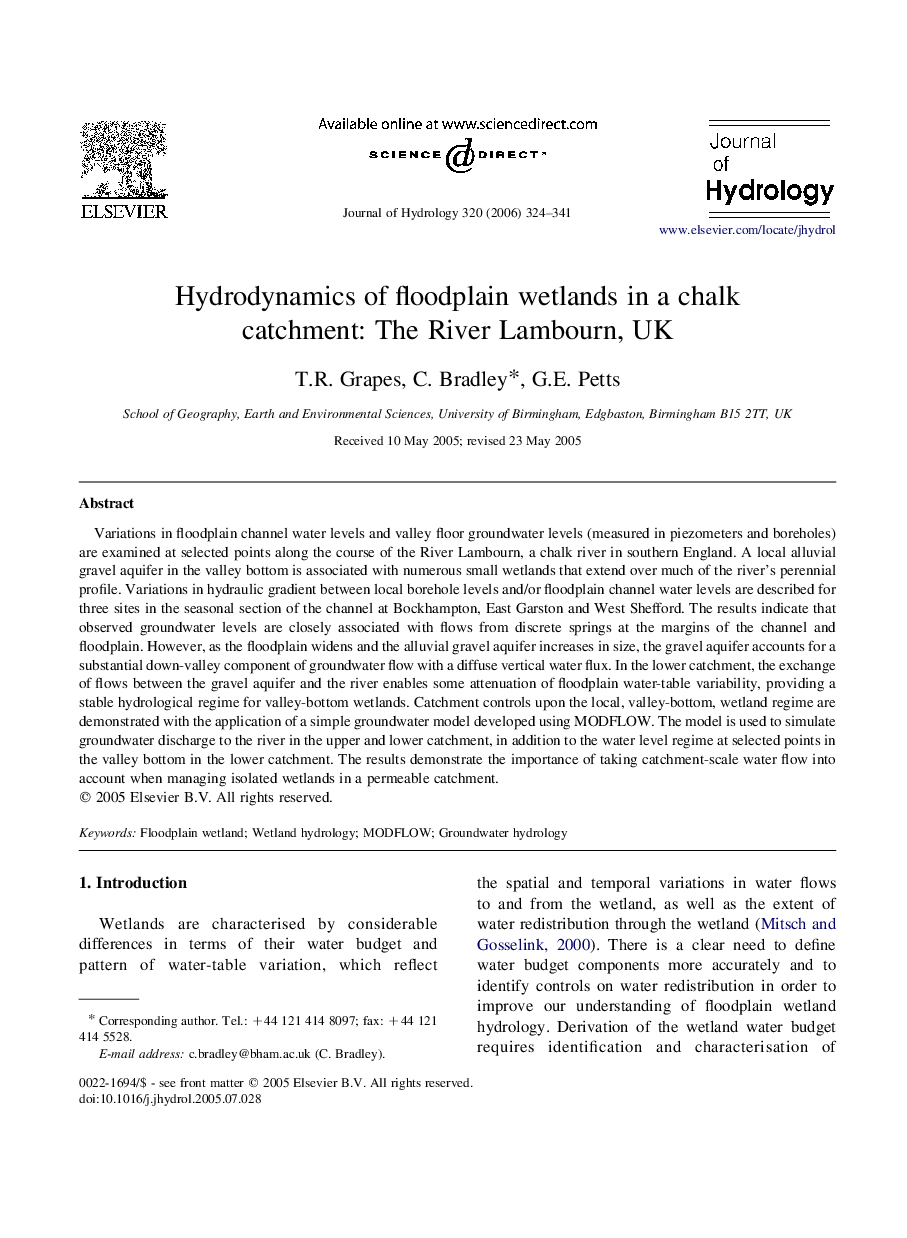| Article ID | Journal | Published Year | Pages | File Type |
|---|---|---|---|---|
| 4580866 | Journal of Hydrology | 2006 | 18 Pages |
Variations in floodplain channel water levels and valley floor groundwater levels (measured in piezometers and boreholes) are examined at selected points along the course of the River Lambourn, a chalk river in southern England. A local alluvial gravel aquifer in the valley bottom is associated with numerous small wetlands that extend over much of the river's perennial profile. Variations in hydraulic gradient between local borehole levels and/or floodplain channel water levels are described for three sites in the seasonal section of the channel at Bockhampton, East Garston and West Shefford. The results indicate that observed groundwater levels are closely associated with flows from discrete springs at the margins of the channel and floodplain. However, as the floodplain widens and the alluvial gravel aquifer increases in size, the gravel aquifer accounts for a substantial down-valley component of groundwater flow with a diffuse vertical water flux. In the lower catchment, the exchange of flows between the gravel aquifer and the river enables some attenuation of floodplain water-table variability, providing a stable hydrological regime for valley-bottom wetlands. Catchment controls upon the local, valley-bottom, wetland regime are demonstrated with the application of a simple groundwater model developed using MODFLOW. The model is used to simulate groundwater discharge to the river in the upper and lower catchment, in addition to the water level regime at selected points in the valley bottom in the lower catchment. The results demonstrate the importance of taking catchment-scale water flow into account when managing isolated wetlands in a permeable catchment.
